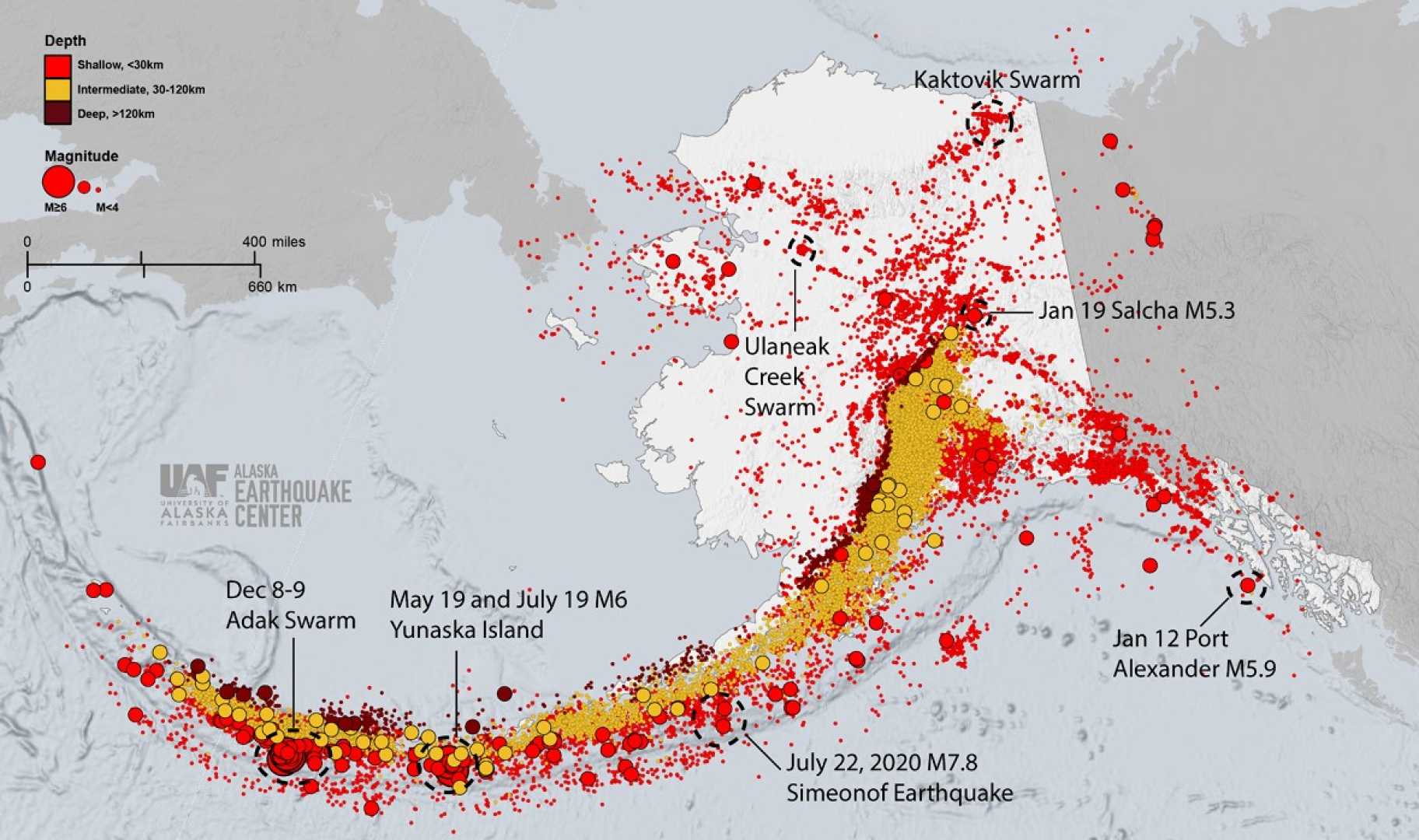News
New Earthquake Activity Recorded in Alaska Peninsula Region

ALOHA, Alaska – A seismic event occurred in the Alaska Peninsula region on July 16, 2025, at 1:25 p.m. AKDT. The earthquake registered at a depth of 15.7 miles (25 kilometers) and its epicenter was located at latitude 54.5512°N and longitude 159.7905°W.
This recent activity adds to the complex seismic picture of the area. The Alaska Peninsula is known for its strong earthquakes, primarily due to the Aleutian megathrust fault, which has produced significant seismic events in the past, including the 2020 magnitude 7.8 Simeonof Earthquake and the 2021 magnitude 8.2 Chignik Earthquake. While neither event generated damaging tsunamis, they are part of the ongoing tectonic activity in this region.
Historical records indicate that several tsunamis have impacted Russian communities in the area, and recent studies have uncovered paleo-tsunami deposits, highlighting a long history of tsunami risks. The ongoing subduction of the Pacific Plate beneath the North American Plate contributes to this seismic nature and forms the Wadati-Benioff Zone, where intermediate depth earthquakes frequently occur.
Officials report that the Alaska Peninsula experiences thousands of earthquakes annually, most of which are too low in magnitude and depth to be felt. Noteworthy events in recent history include the 1999 M7.0 and 2001 M6.9 earthquakes that impacted Kodiak Island, causing damage and disruption.
Additionally, crustal seismicity in the region is linked to both the Kodiak Shelf Fault Zone and volcanic activity. The Novarupta eruption in 1912, classified as the largest volcanic eruption of the 20th century, was preceded by a series of magnitude 7+ earthquakes.
As seismologists continue to monitor this region, they stress the importance of preparedness for such natural events, given the area’s historical seismic activity.












